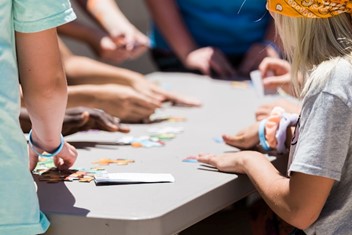Debra Mercora holds a Doctorate in education, administration and supervision and has a passion for inspiring other educators to take on a new, exciting, and cutting-edge approach to learning and teaching. In the following article, Debra Mercora discusses the benefits of project-based learning, how it works, as well as how teachers can implement this type of learning into the classroom. Project-based learning is sure to engage students’ learning well beyond how any lecture could.
Educators and researchers alike have long argued that simply lecturing young children doesn’t provide a strong enough foundation for them to grasp complex concepts. To overcome the limitations of teacher-centric lesson plans, proponents of project-based learning suggest that assigning hands-on projects over an extended period of time helps students learn real-world problem-solving skills while mastering a specific topic explains Debra Mercora, Superintendent.
Although project-based learning takes a lot of planning and preparation to be successful, students often enjoy working on projects with their peers more than simply sitting and listening to their teachers. Debra Mercora, Superintendent in NJ discusses more about this educational approach below, how it’s being implemented, and a few of the limitations inherent in the method.
The Main Idea
Many parents remember a time when they were sat in a classroom, half asleep, and listening to their teacher’s droning voice rambling on about the American Civil War, long division, or some obscure line of poetry. Over the years, educators have realized the limitations of this teaching style and worked to engage students in their education rather than simply broadcasting knowledge into their heads explains Debra Mercora, Superintendent.
Project-based learning is designed to help students learn by doing. The theory is that students are more likely to remember and understand a concept if they are actively engaged in it, rather than just listening to a lecture or reading about it in a textbook. Through this method, students work on long-term projects that are directly related to what they’re studying.
Debra Mercora of NJ says that these projects are usually done in small groups, with each student taking on a specific role within the project. For example, if the project is about the American Revolution, each student might be responsible for researching a different aspect of the war. At the end of the term, the students then come together to present their projects and offer a comprehensive understanding of what they’ve learned.

How Educators Implement Project-Based Learning in a Classroom Setting
Project-based learning can be used in any classroom, for any age group. However, it’s often most successful when it’s implemented with older students who are able to think abstractly and work independently. That said, with a little creativity, even younger students can be engaged in project-based learning explains Debra Mercora, Superintendent.
Teachers must first come up with a project idea, whether on their own or with input from their students, or students may choose from a list of potential projects. After settling on a topic, teachers then outline the steps that need to be taken to complete the project. From there, students can form their own groups, assign roles within their groups, and construct a timeline for completing the entire project.
Debra Mercora, Superintendent in NJ says that It’s crucial for students to feel challenged by the project yet it should still be achievable. For example, a student who struggles with reading might be given the task of finding images related to the project, while a student who’s a stronger reader can be responsible for writing the report. This way, each student’s strengths are highlighted and contribute to the project.
Benefits and Limitations
Project-based learning is not without its limitations explains Debra Mercora, Superintendent. The biggest challenge facing educators who want to implement this method is time. Because projects can take several weeks or even months to complete, it’s often difficult to find the time to fit them into a school’s curriculum.
Another challenge is that project-based learning requires a lot of planning and preparation on the part of the teacher. Debra Mercora, Superintendent says that if the year’s curriculum is particularly busy, it can be difficult to follow a project-based learning approach. In addition, it can be difficult to assess each student’s individual performance on a project.
However, Debra Mercora, Superintendent says that proponents of this educational approach argue that the benefits outweigh the challenges. Some of these benefits include:
- Students learn real-world problem-solving skills.
- Students learn to work collaboratively.
- Students learn to communicate effectively.
- Students learn to take responsibility for their learning.
- Students learn to persevere through challenges.
- Students learn to think creatively.
- Students learn to use technology effectively.
- Students learn time management skills.
- Students learn to be resourceful.
Most importantly, though, project-based learning engages students, keeping them on track and interested in what they’re learning.
The Takeaway
Project-based learning is a modern approach to education that encourages students to take an active role in their learning. Teachers assign long-term projects and allow students to work together in small groups to complete them. Although project-based learning has its challenges, the method has been shown to be an effective way to engage students and help them learn real-world problem-solving skills.









